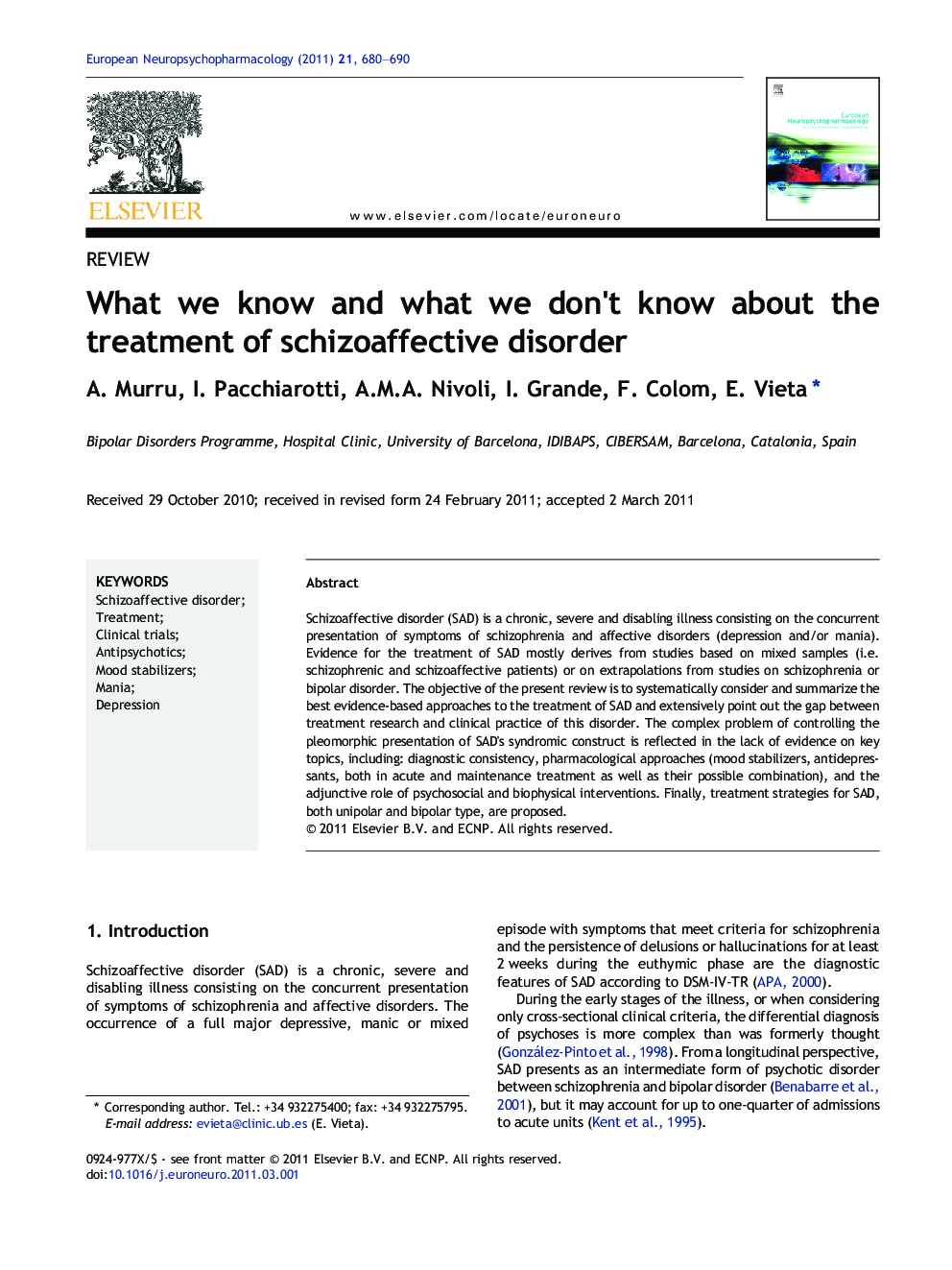| Article ID | Journal | Published Year | Pages | File Type |
|---|---|---|---|---|
| 10298712 | European Neuropsychopharmacology | 2011 | 11 Pages |
Abstract
Schizoaffective disorder (SAD) is a chronic, severe and disabling illness consisting on the concurrent presentation of symptoms of schizophrenia and affective disorders (depression and/or mania). Evidence for the treatment of SAD mostly derives from studies based on mixed samples (i.e. schizophrenic and schizoaffective patients) or on extrapolations from studies on schizophrenia or bipolar disorder. The objective of the present review is to systematically consider and summarize the best evidence-based approaches to the treatment of SAD and extensively point out the gap between treatment research and clinical practice of this disorder. The complex problem of controlling the pleomorphic presentation of SAD's syndromic construct is reflected in the lack of evidence on key topics, including: diagnostic consistency, pharmacological approaches (mood stabilizers, antidepressants, both in acute and maintenance treatment as well as their possible combination), and the adjunctive role of psychosocial and biophysical interventions. Finally, treatment strategies for SAD, both unipolar and bipolar type, are proposed.
Keywords
Related Topics
Life Sciences
Neuroscience
Biological Psychiatry
Authors
A. Murru, I. Pacchiarotti, A.M.A. Nivoli, I. Grande, F. Colom, E. Vieta,
